10th August 2025

John Wyver writes: In the line-up for the Baird 30-line transmission on the morning of 10 August 1931, along with jazz drummer L. Ash-Lyons and monologist Janet Barrow was Avril Coleridge-Taylor giving for the third time on television a demonstration of classical dancing. Now increasingly celebrated as a composer, with two of her short compositions played last week at the BBC Proms, Coleridge-Taylor would appear to be the first person of colour to appear on television in Britain. *
Born in 1903, Avril Coleridge-Taylor (above) was the daughter of feted composer Samuel Coleridge-Taylor, who was himself the son of Daniel Peter Hughes Taylor, a Creole man from Sierra Leone. Samuel was apparently known by white musicians in New York as the ‘African Mahler’ when he toured the United States in the early 1900s. He was especially famous for his immensely popular trilogy of cantatas ‘The Song of Hiawatha’, the first section of which premiered in 1898.
read more »
9th August 2025
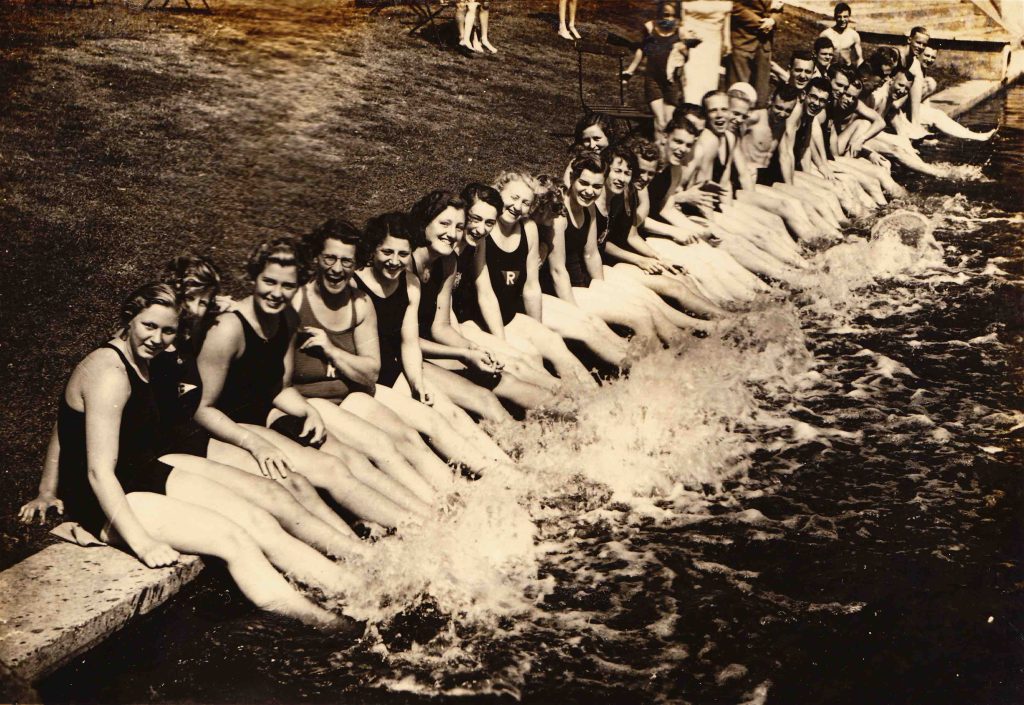
John Wyver writes: Monday 9 August 1938 was the first day of the BBC’s mobile control unit being at the Empire Pool, Wembley (now Wembley Arena) for the European Swimming Championships. Two afternoon visits continued each day throughout the week, with Olympic champion sprinter Harold Abrahams as one of the main commentators.
On this first day viewers saw 100m backstroke heats and a water polo match between Germany and Belgium; later in the week there was lots of diving (presumably relatively easy to capture on camera), more races, and several further water polo contests. Great Britain ended up fifth in the medals table, with Betty Slade bringing home our sole gold in the 3 metre springboard competition. Hungary won the men’s water polo.
read more »
8th August 2025

John Wyver writes: Intimate Interlude on the evening of Tuesday 8 August 1939 offered a bill featuring Mexican magician Kantu and Polish dancers Halima and Konarski, along with the mime artist Sherkot. As a vaudevillian whose act was almost entirely visual, although heavily reliant on a synchronous score featuing drum beats and symbol crashes, Sherkot was one of television’s artists who not had the chance to shine previously on radio
A bemused Keaton-esque clown, Sherkot performed the actions by sportsmen throwing, twirling and catching imaginary balls and the like. He appeared at least four times in live broadcasts from Alexandra Palace, but he was also featured by producer Dallas Bower in the BBC Television Demonstration Film, shot of 35mm film, which was shown every weekday morning from the summer of 1937 through to wartime shutdown.
read more »
7th August 2025
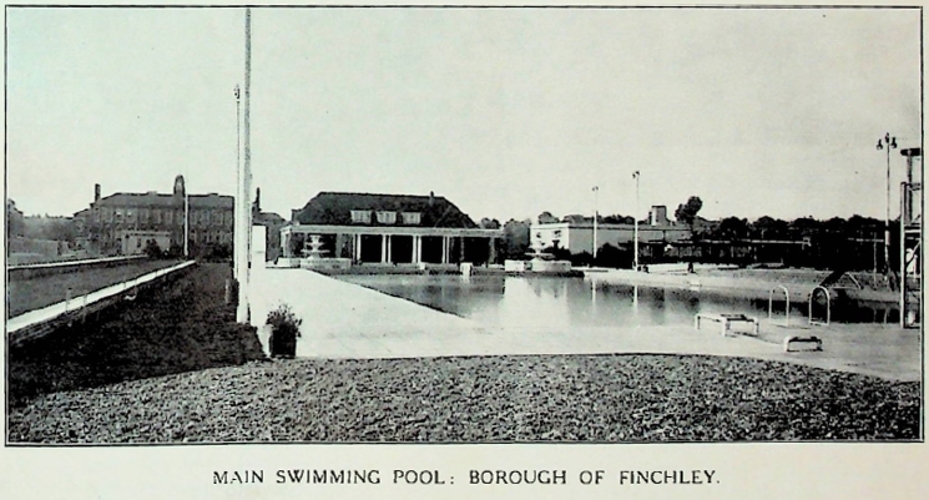
John Wyver writes: You can sense from Alexandra Palace’s schedules that August was the cruellest month for those running the service in 1938 and 1939 (and remember that Television shut down for three weeks in 1937). Producers and crews were presumably on their holidays, ideas appear to be in short supply, and it was clearly a struggle to fill the hours. Even the programme titles have a slightly desperate air, as in Make Sure of a Wet Bank Holiday! on the afternoon of 7 August 1939.
A 40-minute outside broadcast from Finchley Open Air Swimming Pool, this transmission was introduced by Leslie Mitchell and Elizabeth Cowell. Mitchell talked to four young women who told him they were chorus girls rehearsing a new Jessie Matthews show, and he interviewed Monica Waldack, Finchley Bathing Beauty Queen.
Elizabeth Cowell was consigned to the children’s pool to see what entertainment the little ones could provide, and apart from a two-minute loss of vision in the middle of the broadcast, other attractions included Highgate Diving Club member Mr Fitzjohn on the greasy pole and Mr Diplock smoking a pipe under water. Perhaps you had to be there.
read more »
6th August 2025
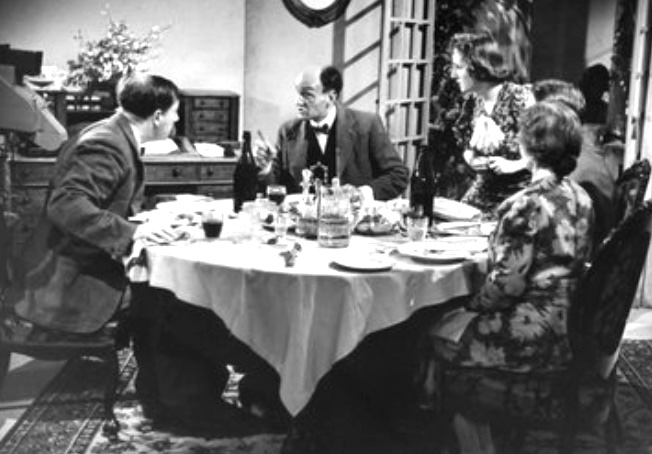
John Wyver writes: The evening of the next day was to be devoted to the Russian ballet, and so the week’s headline drama was played on Saturday 6 August 1938, rather than the traditional Sabbath. The play was J.B. Priestley’s comedy-drama from 1933, Laburnum Grove. Michael Barry adapted and produced, with a fine cast that included Maurice Denham, Rosemary Lomax, Kitty de Legh, Charles Victor and Susan Richards.
‘E.H.R.’ for the Observer noted that the play had previously been given on radio, and that this production
showed how much more enjoyable is a play when it can be seen as well as heard.
read more »
5th August 2025
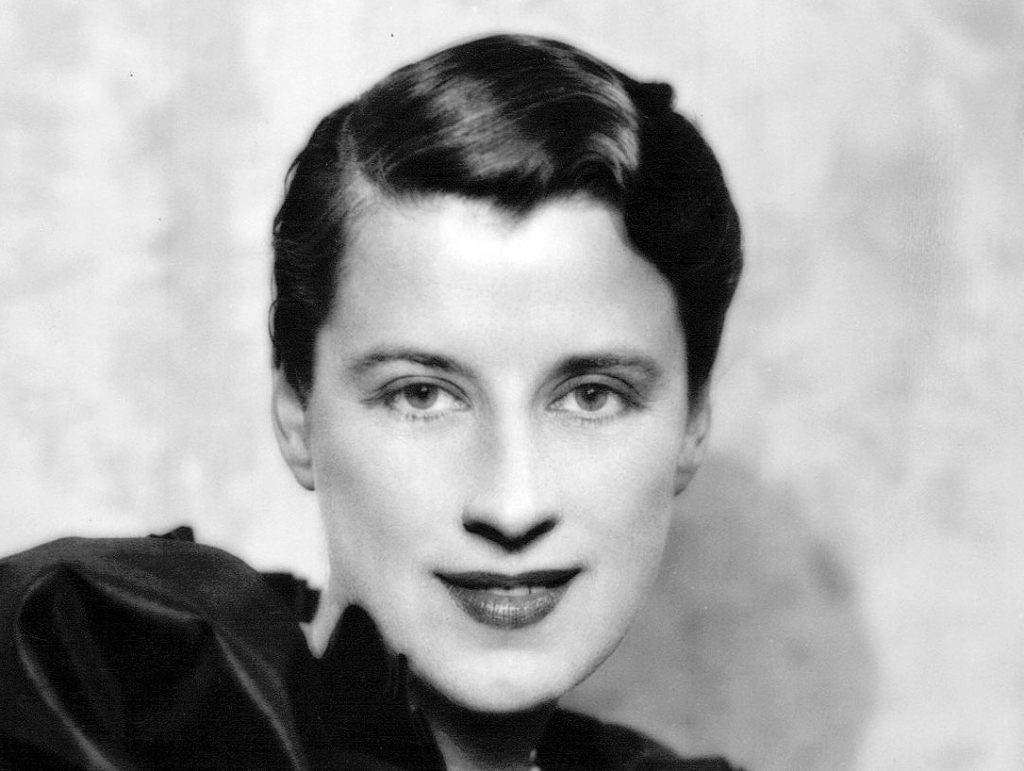
John Wyver writes: Nearly three years on from the first 405-line broadcasts from Alexandra Palace to Radiolympia, the levels of creative ambition and achievement were exceptionally high. The producers were creating innovative drama, mounting complex OBs and, as yesterday’s post suggested, developing new forms like the studio documentary. But inevitably there were days when it was clearly a stretch to fill the nearly three-hour schedule. One of those days would appear to have been Saturday 5 August 1939.
read more »
4th August 2025

John Wyver writes: On the evening of Thursday 4 August 1938 Alexandra Palace offered a feature programme with the somewhat unweildy title Exhibition: A Panorama Paris 1797-Glasgow 1938. Devised by Reginald Beckwith and Andrew Cruikshank, and produced by Moultrie Kelsall, this marked Glasgow’s Empire Exhibition with a look back to notable international fairs of the past century and a half.
The format was a sequence of short historical dramatisations linked to Paris in 1797-8, the 1851 Great Exhibition and the White City site, which hosted five international fairs in the early twentiety century, interspersed with ‘schoolroom’ scenes, which presumably provided some kind of historical context.
The three key creatives had collaborated on an earlier feature programme, Stands Scotland..?, in November 1937, and ‘E.H.R.’ in the Observer felt that they
had by no means expended all their originality on Stands Scotland…? Those who saw both will agree that the authors are a clever pair, with a gift for seeing things from the hitherto unused point of view.
In The Listener Grace Wyndham Goldie agreed:
Last week’s Exhibition, the first feature programme I have seen on television… was astonishingly successful, partly because it was, in form, a chronicle, partly because of its changes of scene and partly because the camera was used to comment, often wittily, upon the words instead of merely photographing the speaker. Since the programme had the vitality that so many of the plays lack it did not matter so much that it was long.
With this pair of feature programmes, with the broadcasts that Denis Johnston was developing like Death at Newtownstewart and The Parnell Commission, and with Soho and East End, the studio documentary was gradually emerging in these final months before the war. This was a form that was to flourish, comparatively briefly, in the post-war years, before being effectively supplanted by the tradition of documentary filmmaking.
[OTD post no. 230; part of a long-running series leading up to the publication on 8 January 2026 of my book Magic Rays of Light: The Early Years of Television in Britain, which can now be pre-ordered from Bloomsbury here.]
3rd August 2025
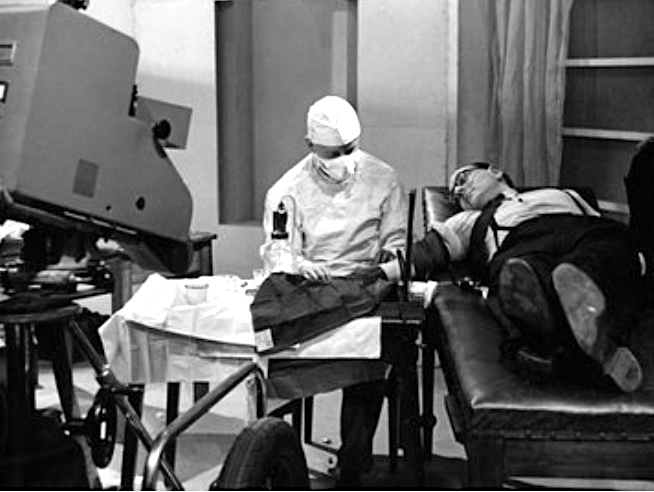
John Wyver writes: Sandwiched between a newsreel and a cartoon on the evening of Thursday 3 August was a quintessential example of television as a public service – and arguably further evidence of the BBC preparing the audience for the coming war.
Blood Donors was a 13-minute explanation and studio demonstration performed by Dr Jessop from University College Hospital. The donor’s name is recorded to history as one J. Markby.
That day’s Manchester Guardian outlined the purpose and plan for the broadcast:
More people, it is believed, would respond to the appeal for blood donors if they knew clearly what was expected of them and what happened when their blood was taken…
Doctors and their assistants from University College blood donors’ unit will take their apparatus to Alexandra Palace. where a volunteer will be tested before the· cameras for the qualjty of his blood. A doctor will then explain the different categories in which blood donors are placed.
Viewers will next see how a pint of blood is taken from a volunteer and how, if it is not used immediately, it is refrigerated for future use. The point of the broadcast is to show that the operation of the blood test and transfusion is extremely simple, and that the donors suffer no inconvenience.
[OTD post no. 229; part of a long-running series leading up to the publication on 8 January 2026 of my book Magic Rays of Light: The Early Years of Television in Britain, which can now be pre-ordered from Bloomsbury here.]
2nd August 2025

John Wyver writes: Nearly a year on from the BBC having taken over 30-line television, producer Eustace Robb was keen to produce increasingly ambitious broadcasts. One example was Looking at London by Television, a 35-minute original revue screened in the late evening on Wednesday 2 August 1933.
In the cast were Marjorie Gordon, John Rorke and Harold Kimberley, along with Billy Milton and the Paramount Victoria Girls. New sketches and songs, which included ‘The pigeons of St Paul’s’ and ‘Hyde Park Corner’, were contributed by Milton, Ernest Longstaffe and Harry S. Pepper.
Two images from the September issue of Television also indicate the inventiveness of the production working with just a single scanner and basic graphics. The range and riches of the show are also detailed in the magazine’s ‘Last month’s programmes’ column:
The revue Looking at London was the best yet seen and heard, and I attribute its success to the experienced cast and to the snappy presentation for which Eustace Robb, the producer, must have credit. Maybe he just happened to choose artists that I like; anyway, they all looked good to me.
read more »
1st August 2025
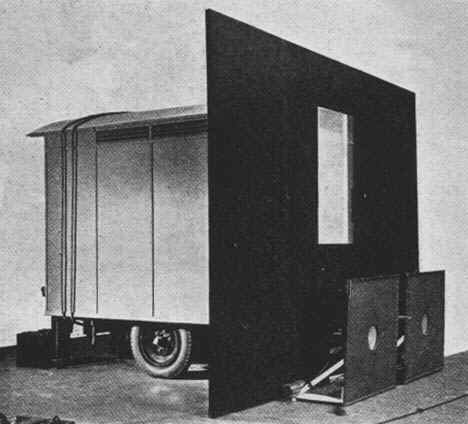
John Wyver writes: In the weeks just after The Man with the Flower in his Mouth (see earlier post), John Logie Baird’s campaign to extend awareness of the potential of television next took to the stage of the London Coliseum. On Thursday 1 August 1930 Television as part of a variety bill was four nights into the first week of its engagement.
From the start of his work with television, Baird had been fascinated by its large-screen potential, and a roof-top display used for the press and others to see The Man with the Flower in His Mouth had been unveiled one evening a fortnight before the broadcast. ‘Setting for the show was perfect,’ reported Variety. ‘Screen was rigged against the skyline on roof of a pretty tall building, with diminutive electric signs playing below it, and a flaming cloud bank drawn up behind.’
Following the presentation of The Man... to an audience of press and others, the cumbersome display was manoeuvred along from Long Acre to the cavernous theatre in St Martin’s Lane. As a crude screen mounted above two loudspeakers on one end of a black-painted caravan, television became a three-times-a-day novelty act on one of the capital’s most prestigious variety bills. In doing so, television followed early film which had been frequently featured in variety programmes.
read more »









